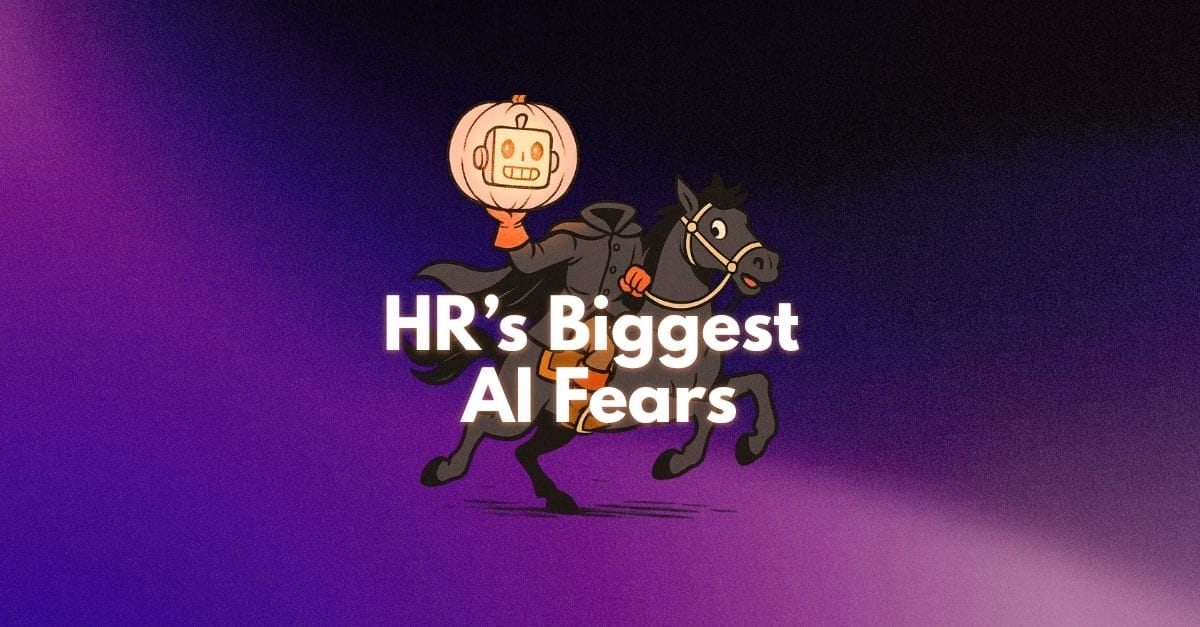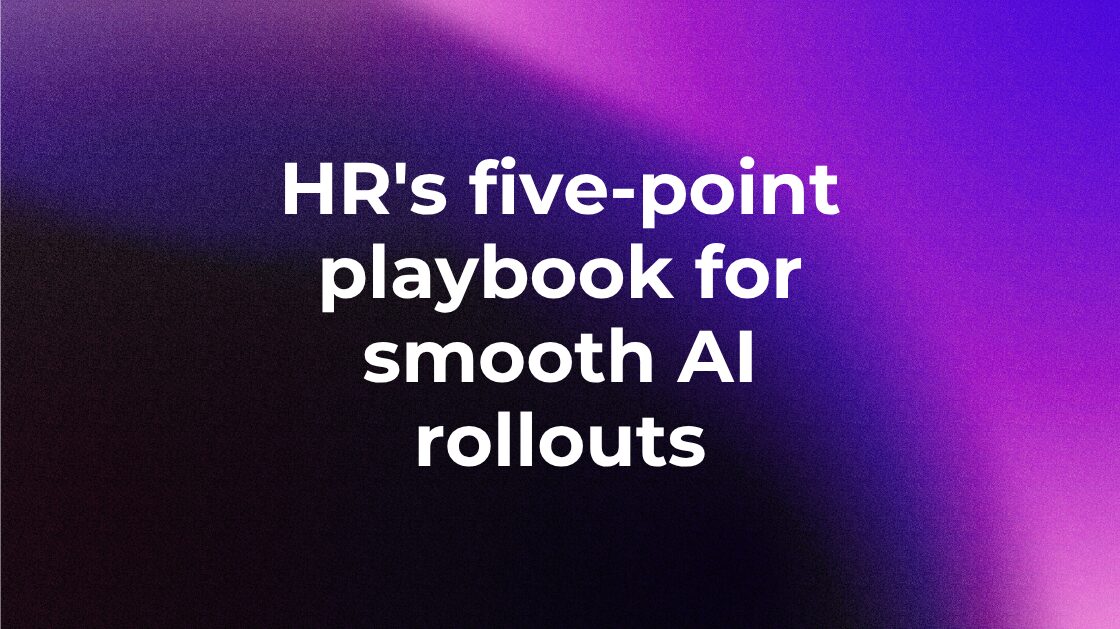Think about the best co-worker you’ve ever had. What was it that made that relationship successful? Perhaps you had a great manager—someone who understood your needs, supported your ambitions, and trusted in your abilities. Maybe you had a teammate you jived with particularly well, or a “work bestie” you could vent to when things were tough.
If you think camaraderie is best left for lunch hours or holiday parties, think again. According to Gallup, employees who have a best friend at work are less likely to quit, more likely to feel satisfied with their job, and more likely to recommend their company as a great place to work. When you invest in relationships, you invest in retention and loyalty.
Now imagine a workplace where you can build those great relationships—faster and more intuitively. With PI’s Relationship Guide, that’s exactly what we aim to achieve.

Develop better leaders with PI’s personalized management software
Empower managers to understand what drives their team with PI Behavioral Insights
How the Relationship Guide works
The Relationship Guide is located within PI Inspire, our leadership development software tool. This feature lets you search any two employees at your company (provided they’ve been invited to Inspire) and compare their unique behavioral patterns side by side.
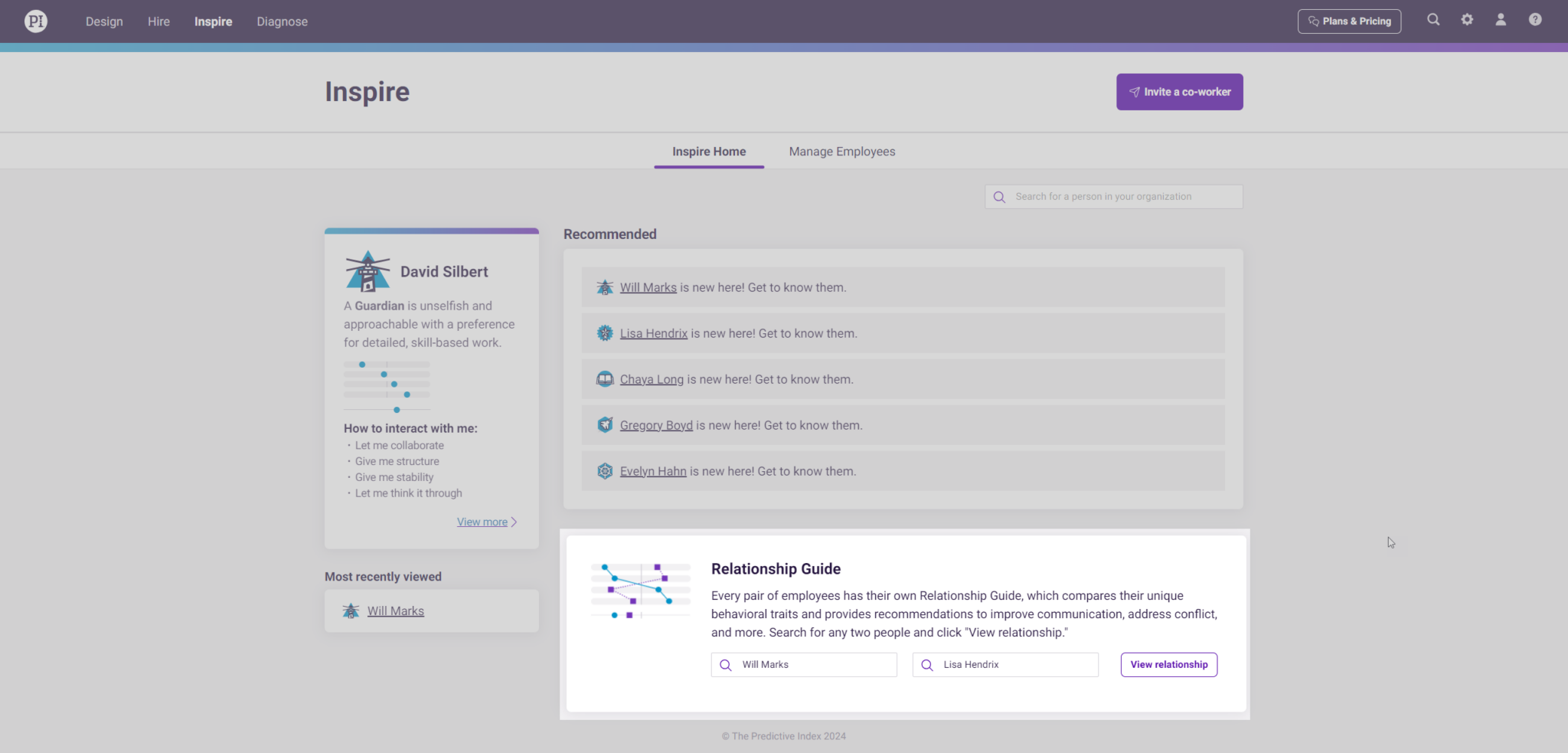
In this example, I’ve searched for two colleagues—Will and Lisa. At the click of a button, Inspire brings me to Will and Lisa’s Relationship Guide.
Here, I can see that Will is a Guardian, known for being unselfish and approachable. Lisa, meanwhile, is a Specialist, known for being responsive and loyal. Just at a glance, the two seem like harmonious personalities, but I want to dig in deeper to make sure.
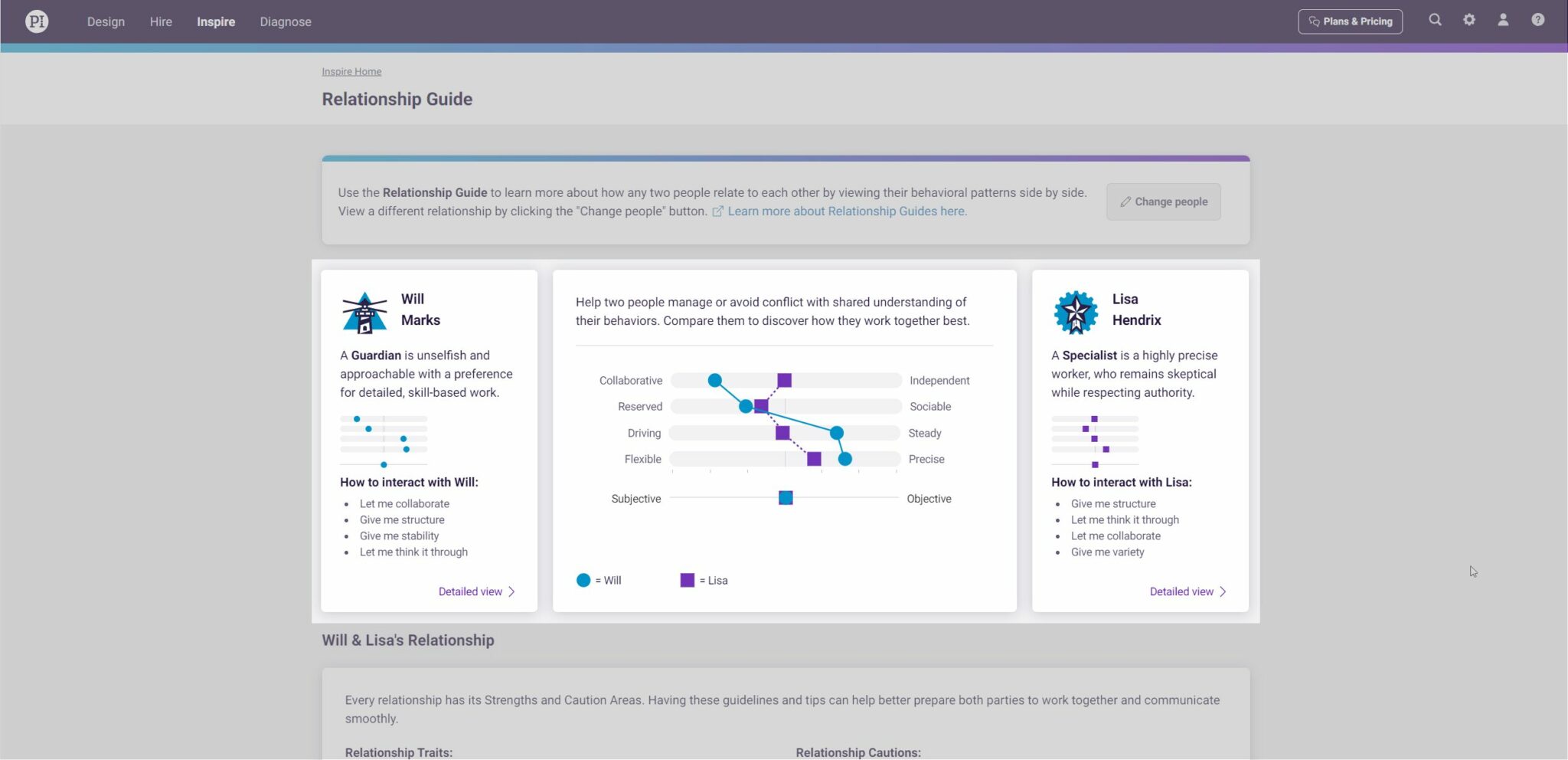
That’s where the behavioral pattern overlay comes into play. In blue, I can see Will’s pattern—in purple, Lisa’s. According to the behavioral data, both individuals are relatively reserved; they also tend to be precise in their work. Yet, Lisa tends to be more independent and driving than Will—suggesting she may have a faster-paced, more task-focused work style.
Further down in the Relationship Guide, I can explore those similarities and differences in full. According to the guide, Will and Lisa are generally friendly, collaborative, and agreeable. However, their reserved nature may prevent them from communicating freely. Lisa’s driving nature may also conflict with Will’s steadier pace of work, leading to frustration.
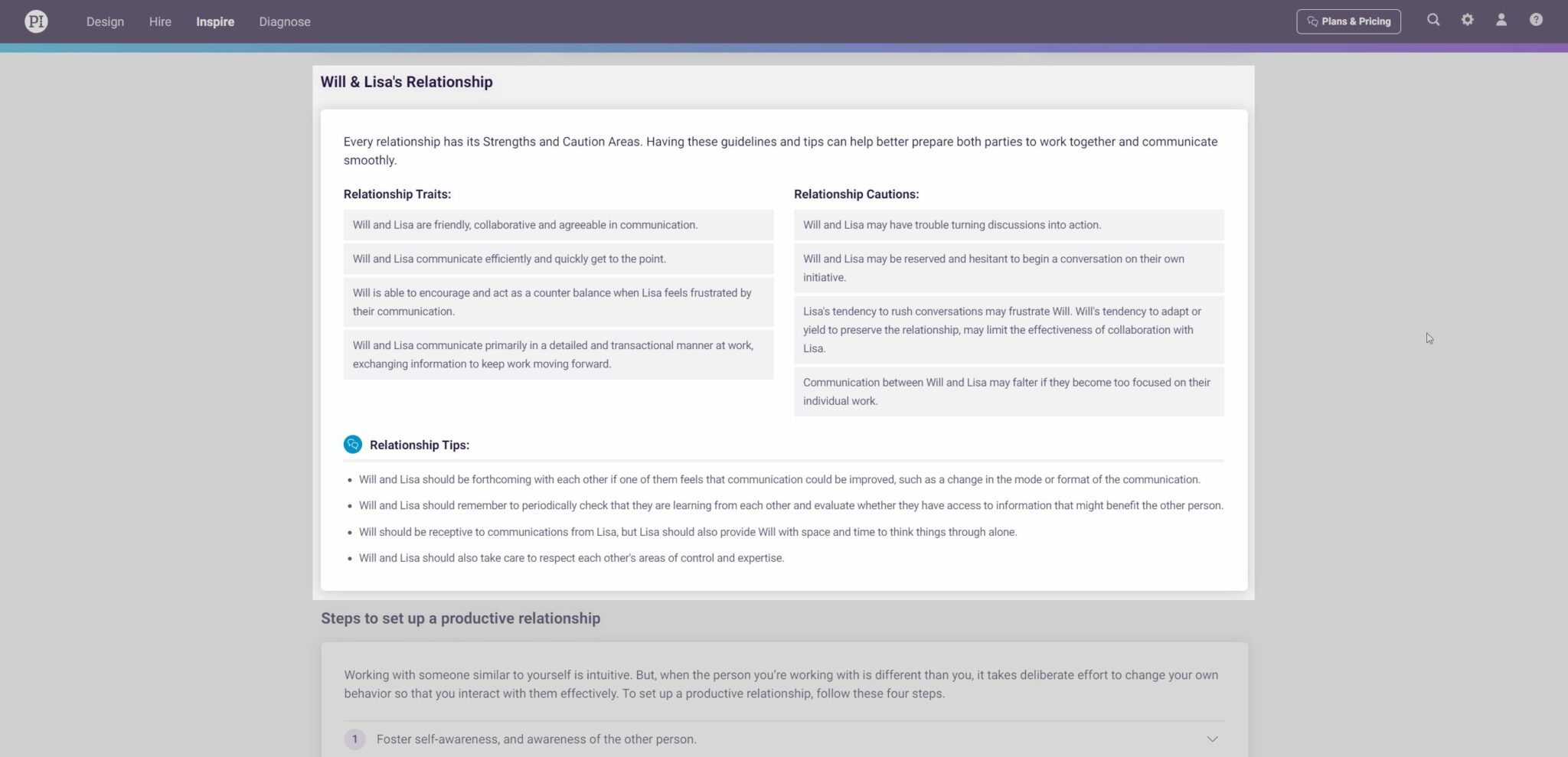
Thankfully, the Relationship Guide comes equipped with tips to help Will and Lisa improve their relationship. For instance, the two can encourage open communication by scheduling regular check-ins. Lisa can cater to Will’s steady pace of work by giving him time to absorb information, and both can build trust by respecting each other’s expertise.
Of course, implementing these practices is easier said than done. To assist, we’ve included practical steps to help you interpret the Relationship Guide and apply its insights in a healthy, sustainable way.
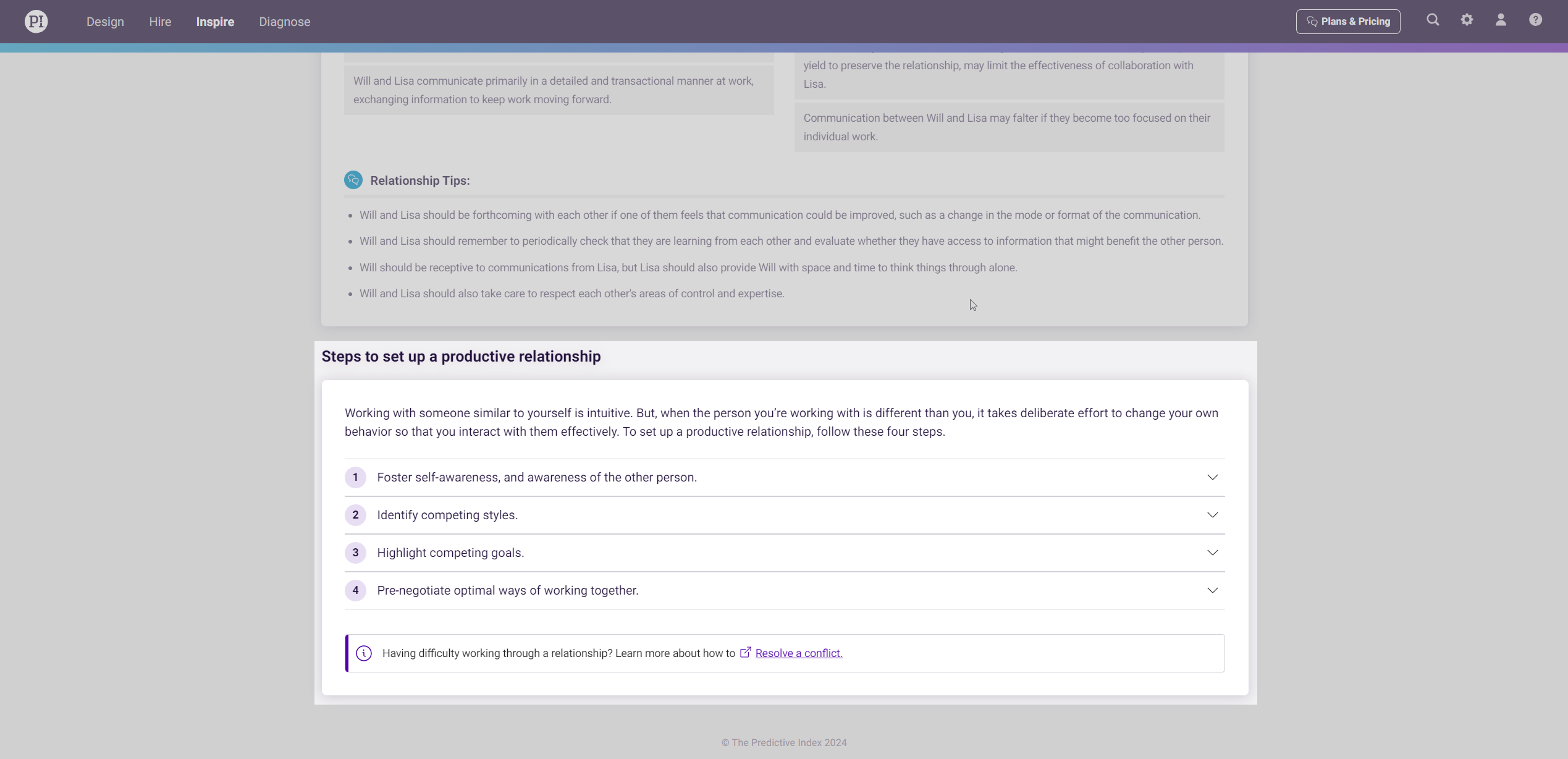
Try the Relationship Guide for yourself.
If you’re an existing Inspire customer, good news! You already have access to the Relationship Guide. Simply log in to the software, and you’ll find it on the Inspire homepage.
If you’re not an existing client, you can try the Relationship Guide by creating a free Inspire account. (No credit card required.)
Here’s to building better relationships—and better workplaces.

Develop better leaders with PI’s personalized management software
Empower managers to understand what drives their team with PI Behavioral Insights



